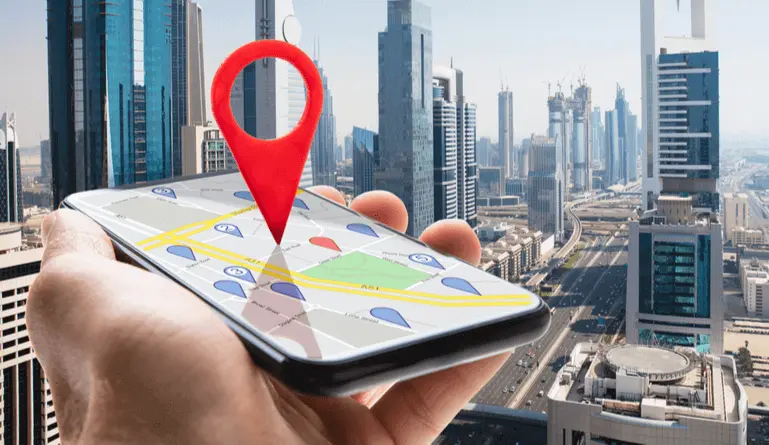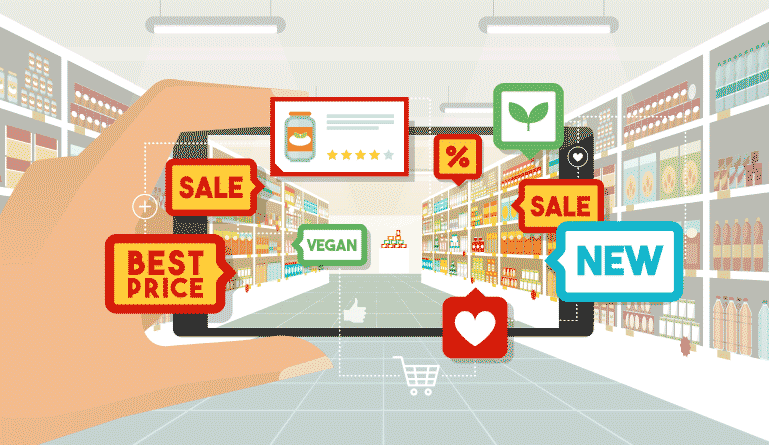There are tons of solutions that can improve marketing strategies. However, allows organizations to effectively connect with consumers. The idea can sound intimidating, but the use of location-based marketing allows companies to get on a personal level with customers, improving their marketing strategies.
It can be done right when it’s executed efficiently. Believe it or not, it’s actually used in any industry you can think of. Stay tuned for what it takes to succeed at location based marketing.
What is Location Based Marketing?
It is when a company uses online or offline messaging based on one’s location. When using your phone or any wireless electronic device, marketers use data from your physical location to enhance marketing tactics locally depending on a consumer’s region.
How Does Location-Based Marketing Work?
Say your favorite brand has a mobile app. If you’re a smartphone user with the said app, then your location settings must be enabled so you as the customer can receive push notifications about local promotions and events. Businesses use to cater to your needs with their brand wherever you are. It’s that simple.
The Importance of Location-Based Marketing
It’s no secret that it creates a significant ripple effect on your business. But, the main reason why it’s so important is that it brings your business one step closer to attracting more revenue and brand awareness at a low cost. We can go on about the importance of location based marketing, but we’d hate to spoil it for you in this one section.
Why Use Location-Based Marketing?
-
To Increase Foot Traffic
First thing’s first. The ultimate step you want to take is increasing engagement for your business. One of the coolest things about location marketing is that it uses your smartphone data to allow users to use their applications effectively. Before you get too overwhelmed, hear us out on this.
The main objective of marketing is to attract old and new customers. So, it’s safe to say that location-based marketing effectively works due to local branding that will cater to your needs.
-
Delivering more relevant ads
Another perk that it can entail is the occurrence of relevant ads. Delivering more ads based on your geographic location can help the cycle of marketing your brand towards a certain demographic.
-
Drive away from the competition
Businesses always want to one-up their competition. When it comes to location-based marketing, you’re not only attracting more consumers but also driving them away from your competing brand. Let’s just say that it can have its perks when advancing in marketing strategy.
-
Create Better UX for Consumers
As mentioned before, smartphone users have access to cool features that the internet offers especially for mobile apps. When using it, users have a better feel of user experience with your app, making it more likely for them to come back and constantly use it again.
Think of location-based marketing as a filter. Based on algorithms and data, you want consumers to experience marketing that’s ideal and exclusive for them. Because it technically markets at a personal level, location-based marketing for your app should be as functional as it looks.
( Also Read: Digital Advertising 101 )
Types of Location-Based Marketing
-
IP Address Marketing
Online ads use IP addresses to market on devices located within household and business locations. Marketing relevant ads using IP addresses works when technology matches up IP addresses to lists of names and street addresses to display advertisements on websites that users tend to visit.
-
GPS Marketing
Location-based marketing can also be applied through GPS marketing. When addresses are registered into search engines, this makes it easier for businesses to lure in customers to nearby locations of your business.
This type of location-based marketing typically works through devices that offer GPS features, especially smartphone users.
-
Proximity Marketing
Proximity marketing distributes advertising content associated with a certain place. Consumers using Bluetooth enabled devices or mobile apps in that area will receive said local promotions from businesses.
-
Beacon Marketing
Beacons, which are small physical objects that receive wireless data through Bluetooth from nearby devices, can be used to market a business by engaging customers in the interiors of retail stores.
This type of marketing works for retailers that own businesses with poor cell reception, which strategically lures in customers to use their smart devices.
-
Blueprints Location-Based Marketing
Blueprints create boundaries geographically around locations and points of interest. This type of marketing is considered to be a sophisticated way of implementing location-based marketing because of its concept of combining behavior data and a user’s location.
Marketers can benefit from this type of location-based marketing because blueprints can filter out the right target audience to aim for greater results.
Benefits to Location-Based Marketing
-
It starts at a low-cost rate and highly targeted
Implementing location-based marketing will cause less investment because of how central mobile devices have become with marketing. Because it starts at a lower cost, it is one of the best marketing investments you can have for your marketing strategy since it’s a highly targeted concept.
-
You get to know your customers better
It allows marketers to get to know their customers on a personal level. Because it’s based on data from smart mobile devices, marketers can use this advantage to increase consumer reach. Marketing relevant ads of your business on mobile apps or browsers will lure in more customers through geofencing and a user’s location.
-
The use of location targeting
The number one tool to location-based marketing is the use of a target location. Using location targeting will initiate the process of reaching out to consumers within a certain region. This makes this easier to market to your target demographic.
-
Business boosts during quiet periods of time
Yes, there are times when businesses can hit a slow day or quiet periods of time that can leave businesses worried about the lack of customers. With location-based marketing, however, businesses can still flourish online.
Promotional deals or relevant ads can still thrive online since it can continue to reach out to consumers with smartphones.
-
Better Connection with your audience
Because of the idea of location-based marketing, marketers can benefit from having an improved connection with their audience. There are established locations of where your audience is, which means that businesses can use this to their own advantage to better a consumer and business relationship.
-
Market Segmentation becomes easier
This makes it easier for market segmentation because it’s straightforward with verticals for geographic and demographic locations. This will make it accessible for marketers who start using location-based marketing.
-
You get a boost up in your engagement
Another perk is that it will increase numbers engagement. Just like marketing segmentation and location targeting, advertising will become easier. This also applies to building more brand awareness for consumers.
-
Impulses become converted into Sales
It can also trigger impulsive buying, which can boost up sales. Remember, impulsive buying is just as great as conservatively planned buying. Impulses have a great advantage, especially with location-based marketing since it can be suggested as an effective marketing angle.
-
Your search engine rankings will improve
The number one goal in digital marketing is to have your business be at the top of the most ranked on search engines. It makes it easier for businesses because when people are on the go, the first businesses that tend to show up are ones that have access to a smartphone user’s location data.
Hence, why it makes search engine rankings improve, especially for marketers investing in location-based marketing for their business.
Disadvantages of Location-Based Marketing
-
Requirements to Opt-in
This must be enabled through users that opt-in their location data. This is how the process starts. Once established, devices that have their location settings will be able to participate in receiving relevant ads and other notifications that will promote businesses.
-
Non-Smartphone Users
The first step is to have access to the location data of a smartphone user. This disadvantage can affect location-based marketing, especially for users who do not own a smartphone. The lack of smartphone users can be another setback to location-based marketing.
-
Targeting Inappropriate Demographic
It’s all happened before. Random ads that pop up when using your internet browser. It can only attract customers within a general vicinity. Because it relies so much on where customers use their smart devices, this can be the cause of random pop-ups of ads that may attract a different demographic.
-
Ineffective Data Location
If you haven’t experienced inaccurate results, then are you really living in the 21st century? Whether it’s A.I. systems misunderstanding your requests, or Google Maps rerouting your location, having ineffective data is bound to happen when using location-based marketing. Technology is close to being perfect. But, when it comes to location accuracy, there’s a chance that results may vary.
Industries that Use Location-Based Marketing
Because technology nowadays works wonders, location-based marketing currently takes over the digital marketing industry with the help of mobile device users. Here’s a little rundown of industries that jumped the bandwagon with location-based marketing.
-
Retail
Retail stores can provide an in-store experience by implementing location-based marketing. With the use of GPS or Beacon marketing, the retail industry should expect increases in brand loyalty and a better understanding of consumer behavior.
-
Hospitality
Hotels, bars, and restaurants can come in handy, especially for consumers who are constantly on the go. The hospitality industry benefits because it provides opportunities such as affordable offers, little features for room service, check-ins via mobile apps, and other local promotional deals.
-
Stadiums
Just like retail, what better way than to lure in more consumers to attract more engagement and increase brand loyalty? One perk about location-based marketing at stadiums is how much excitement and energy that goes into customers who want to have fun and celebrate at nearby places surrounding stadiums.
Sports fans that want to buy merchandise or food and beverages can rely on location-based marketing for the best deals from businesses that are within the vicinity of a stadium.
-
Events
Any type of event that uses location-based marketing can attract customers with a blink of an eye because of how many people tend to publicly gather at these said events.
When it comes to conducting events, location-based marketing simply does its job when businesses successfully rank in search engines on mobile devices. This leads to a ripple effect of engagement and consumerism for local businesses looking to promote products.
-
Travel
Aside from hospitality, the travel industry also thrives with location-based marketing. Whether it’s finding a place to stay, tourist attractions to explore, or a nice place to eat, marketers promoting the travel industry have invested in location-based marketing due to its convenience for loyal and potential customers.
-
Transportation
Auto dealerships are a prime example of businesses that often use location-based marketing. They benefit from geotargeting and reach out to customers, especially ones that shop with other competitive auto dealerships.
This leads to a large retail footprint for the transportation industry, causing successful marketing campaigns that auto dealerships can offer to consumers within a certain area.
-
Hospitals
Because the healthcare industry is a growing industry(1), it’s deemed as essential for consumers. Hospitals significantly benefit due to the high demand that it gets through its RTLs, or Real-Time Location Systems.
-
Industrial
Depending on the type of industrial business, location-based marketing helps establish enhancement. With industrial businesses come into play, the concept of location-based marketing occurs through simple searches on a mobile device
-
Restaurants
With the use of geotargeting, restaurants tend to succeed in location-based marketing. Foodies who want to find hidden gems to eat at can easily look up what’s the best place close to them. The convenience of location-based marketing in the food industry continues to grow.
Curious to learn more about how you can boost your sales with mobile marketing? Head on over to our guide on mobile marketing to seek ideas.
Brands Using LBM
Even though it’s already a given that a majority of any industry that you can think of uses location-based marketing, there are great examples of brands that have also applied this marketing tactic as well.
-
Coach
The luxury handbag company used location-based marketing and audience targeting to increase engagement by 16%. Their main goal was to get 20,000 in-store visits. By doing so, Coach created ads for users that were within the vicinity of a local Coach store.
The overall result led to Coach’s ad campaign raising 31,000 visits total(2), making one of the best CPV model success stories that used location-based marketing.
-
Toyota
In order to increase consumer visits and more buyers, Toyota decided to combine its CPV model with location targeting and its target audience. Their concept of geolocation marketing in their campaign led to 1,200 visits(3) at local dealerships in one month.
-
Adidas
Adidas applied location-based marketing into their brand by installing location extensions into their search ads. This encouraged people who visited the ads, or mobile app to shop at an Adidas store close to them. Hence, an increase in ROI by 680%(4).
-
No Kid Hungry
For their campaign, No Kid Hungry partnered up with GroundTruth to target potential customers visiting the following four participating restaurants: Jack in the Box, Habit Burger, Qdoba, and On the Border. This promotion was designed to incentivize customers who were receiving special offers and donating to a cause at the same time.
-
Whole Foods
Whole Foods, a supermarket chain, partnered up with a location-based marketing(5) firm called Thinknear to improve their post-click conversion rates. The use of geofencing came in handy with this campaign since it picked up a number of store locations and advertised special offers to mobile users that were in the area.
When geo-conquesting, or placing geo fencing near other competitive stores, you change the direction of consumers by increasing their influence of purchasing decisions towards shoppers.
Difference Between Location Based Marketing and Proximity Marketing
| Location-Based Marketing | Proximity Marketing |
|---|---|
| It works effectively when targeting consumers within a large geographical area | Proximity marketing works better if target consumers are located within a specific vicinity such as less than 150 ft. from a certain business |
| Larger reach | Smaller reach |
| Works better outdoors, especially for restaurants and cafes | Works better indoors, especially with retail and apparel |
| It generally uses geofencing or GPS location to engage with consumers via mobile apps or websites | More timely and personal when marketing to consumers |
| Fewer accuracy results | Greater accuracy results |
Final Thoughts
Organizations use location-based marketing as a tool to increase sales revenue and brand awareness. It helps companies get to know customers better such as holding promotional events based on region or vicinity.
Despite its advantages, location-based marketing can also have its disadvantages, especially for non-smartphone users. Hence, the importance of companies targeting the right demographic. By promoting locally, companies can reach out to consumers on a personal level.
It has become an effective strategy for companies because they can reach a great number of engagements and user experience for consumers.





